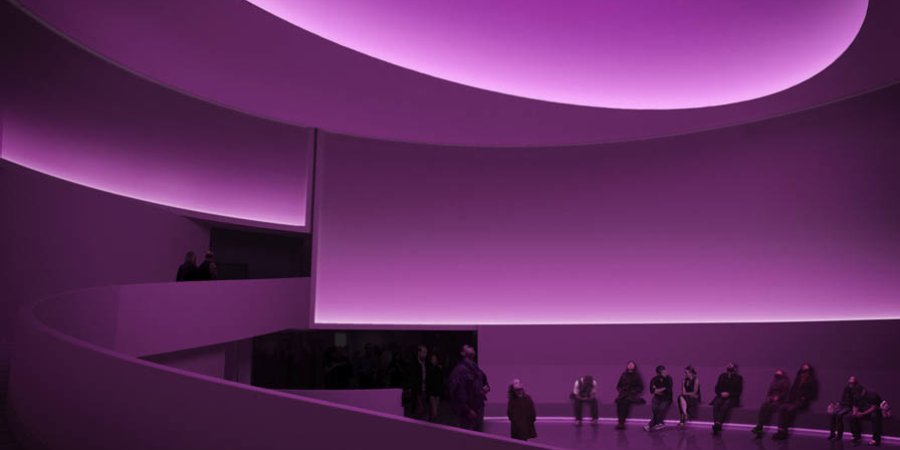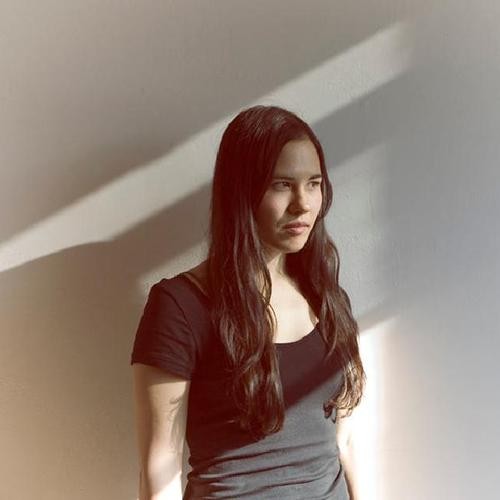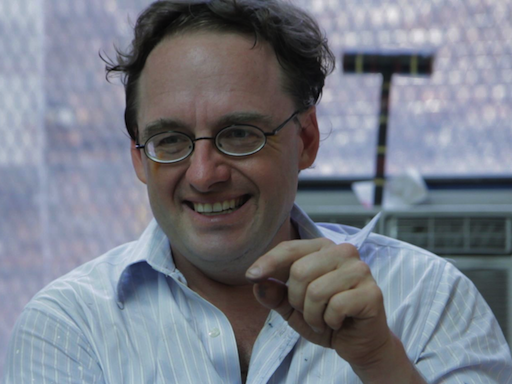Does this June in New York belong to Donald Judd? To judge by the headlines, it certainly does—it seems as if every section of every publication is crowing about the reopening of the late Minimalist's newly restored Spring Street studio, lingering over every detail from the washbasins in the bathroom to the artist who posted a fake Airbnb listing for the spare yet palatial pad. And no wonder: when it comes to capturing the romance of the '70s New York art scene, a time of hard thinking, hard living, and hard, essential, glorious innovation, nothing does it like Judd's Shaker-austere take on cosmopolitan life, with every last detail cut with the same precision that marks his hieratic sculptures. But New York won't be the only beneficiary of the artist's vision this month, since David Zwirner is also spiriting his work across the pond for a show at the gallery's new London space that will be the first significant show of the artist in Britain in almost a decade.
Now that nature seems to be the artistic subject du jour, with eco-inspired art popping up across art fairs, biennials, and exhibitions, it's only natural (pun) that Olafur Eliasson would having a moment too. Now, on the heels of a spectacular two-gallery show that brought his work to São Paulo (at Galeria Fortes Vilaça and Galeria Luisa Strina), and with his epic glacier sculpture stunning visitors to MoMA PS1's "Expo 1" survey, the artist is about to have a new show at his home-turf i8 Gallery and is debuting a new sculptural installation at Munich's newly expanded Lenbachhaus Museum. Meanwhile, Eliasson's "Little Sun" project, a line of affordable wearable sculptures that convert sunlight into enough electricity to power a small lamp usable by third-world denizens, is picking up steam—expect to hear more about it soon.
When Maurizio Cattelan announced he was retiring from the art game after his 2011 Guggenheim retrospective—a wild show, suspending his life's work from the rotunda's ceiling—some suspected that, like Duchamp, who similarly "retired" to work in secret on his final masterpiece, he was simply going underground. Now Cattelan, after focusing his surrealistic sense of humor into projects like Toilet Paper magazine and Chelsea's tiny Family Business Gallery, is about to re-emerge with a new show at Basel's Beyeler Foundation that will reportedly riff on the artist's famous sculpture of a headless horse suspended from a wall (itself a riff on the work of Arte Povera legend Janis Kounellis). So is Cattelan un-retired? It's probably a silly question, actually.
The art duo of Jonah Freeman and Justin Lowe have gathered an obsessive fan base for their sweeping installations that fill entire gallery spaces with environments for visitors to explore, sending them through room after room of what can seem like the site of a hippie freak-out enclave, DIY drug lab, or, thanks to the intricate art-historical references embedded throughout, shanty town hit by an artistic whirlwind. But while these pieces are critically acclaimed crowd-pleasers, they have been difficult to install and even harder to acquire, considering that each of the thousands of parts have to be precisely placed according to the artists' vision. As a result, collectors have largely had to content themselves with acquiring the pair's equally intricate wall pieces and smaller sculptures—but now that's changing with the debut of a new form of installation in Art Basel's Art Unlimited section, which will present one of their environments as a modular sculpture that can be easily assembled and disassembled in multiple sizes and configurations.
JAMES TURRELL
For the past 35 years, James Turrell has devoted himself to working on Roden Crater, a 5,400-foot-high extinct volcano within eyeshot of the Grand Canyon that he has been transforming into a visionary work of land art—a giant sculpture inspired by the pyramids, Machu Picchu, and other ancient sacred sites that the artist is forming with apertures open to the sky that will allow visitors to exult in the vastness of space, time, and the universe. So he's been kinda busy. But this month, as rumors circulate that Roden Crater is nearing completion, the artist is bringing his transcendent art to the world, opening his first solo exhibition in New York since 1980 with a retrospective at the Guggenheim, a comparatively modest affair that will simply transform the entire museum into one of his signature Quaker-inspired skyspaces, to open on the summer solstice. (Wow.) The show, following a just-closed retrospective at LACMA and accompanied by a new show of his projection series at Paris's Almine Rech Gallery, will be nice canapé to tide us over until Turrell's masterpiece is finally unveiled—an event that, along with the expected completion of Michael Heizer's City, promises to send shockwaves through the global art world.
Tony Feher has spent his career looking to mass-produced goods for artistic inspiration, but now the art world is turning to him as a creative example. A 25-year retrospective of his work, which originated at the Blaffler Art Museum in Houston, Texas, is now on view at the deCordova Sculpture Park and Museum in Lincoln, Massachusetts. That his fragilely constructed works, often drawn from intimate and personal materials, are the subject of a career-long survey should come as no surprise, as one of Feher's strengths is his ability to unearth the beauty hidden within quotidian objects. In a monument to the moment, the artist will also be installing a large, yet temporary, site-specific sculpture in the window of the deCordova, a work that changes with the seasons, enhancing the allure of the everyday. The show will be making its way to New York in the fall, opening at the Bronx Museum in October.
Known for his ability to move between media, Israeli artist Uri Aranhas created a diverse range of works for prominent sites. In addition to his recent inclusion in Massimiliano Gioni's Venice Biennale exhibition, where he displayed an arrangement of intricate sculptures, Aran's next project takes him to New York City's High Line park where he'll be installing a sound art piece. Set in the midst of the park's other commissioned works—including imposing sculptures by artists like Virginia Overton and El Anatsui—Aran's Untitled (Good & Bad) pipes an overly formal and affected voice reading a list of animals, such as spider or platypus, with each being described as either "good" or "bad." Just as Aran's sculptures and videos challenge our assumptions about the nature of the world, this playful sound work pokes fun at the arbitrariness of the way we classify the natural world.
For Barbara Bloom's new show at New York's Jewish Museum , "As it were … So to speak: A Museum Collection in Dialogue with Barbara Bloom," open until August 4th, the artist has rifled through the institution's collection, selecting and presenting works that would otherwise never be shown in the same room, let alone side by side. With many of the artworks arranged in furniture-shaped display cases, Bloom stages the gallery spaces as domestic interiors, suggesting a dialogue between neighboring artworks. Though kooky curation is nothing new for the "Pictures Generation" artist—her acclaimed 1989 piece The Reign of Narcissism involved a room devoted to Bloom's personality—this current show looks outward rather than inward, allowing for previously unimagined ways of understanding the art on hand.
The last of Thomas Hirschhorn's four "monuments" honoring famous scholars and intellectuals is currently in the process of being constructed on the Forest Houses development in the Bronx. Dedicated to the Italian Marxist theorist Antonio Gramsci, the monument will be created—and later disassembled—by the local residents of Forest Houses, who will also be temporarily staffing the outdoor pavilion, theater, lounge, and restaurant, among other facilities that Hirschhorn also has planned. The monument, which will be built from "unintimidating" materials, is nothing unusual for the artist, who has a history of creating massive, incredibly intricate installations out of ordinary materials like cardboard and plastic wrap.
Best known for her 1970s-styled portraits of self-assured and confident black women, often painted on canvases decorated with colorful rhinestones and acrylics, Mickalene Thomas will be just about everywhere this month, starting with her appearance at Lehmann Maupin's booth at Art Basel in Switzerland. The space will not only be arranged like one of the sets of her tableaux, but will also feature a salon-style display of the images Thomas uses for inspiration, as well as a painting of supermodel Naomi Campbell. Thomas has also been commissioned to create a haute couture garment for Net-A-Porter's ART CAPSUL program, launching in July, which asks contemporary artists to design clothing celebrating their own original visions. As if major art fairs and department stores weren't enough, the 30-minute documentary that Thomas made about her mother and muse is slated to screen this year in London and Phildelphia, as well as on HBO starting in 2014.



























